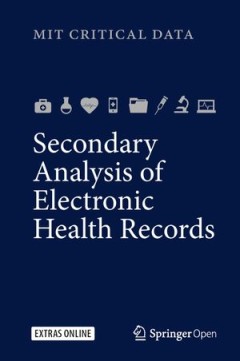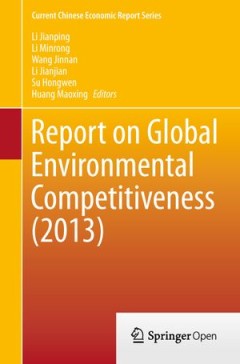Filter by

Secondary Analysis of Electronic Health Records
Health Informatics; Ethics; Data Mining and Knowledge Discovery; Statistics for Life Sciences, Medicine, Health Sciences
- Edition
- -
- ISBN/ISSN
- 9784431551102
- Collation
- -
- Series Title
- -
- Call Number
- 650

Second Assessment of Climate Change for the Baltic Sea Basin
Earth System Sciences; Atmospheric Sciences; Baltic Sea; Environmental Impacts; Regional Climate Change; Regional Climate Projections
- Edition
- -
- ISBN/ISSN
- 9783319270685
- Collation
- -
- Series Title
- -
- Call Number
- 650

S-BPM in the Production Industry : A Stakeholder Approach
This book is open access under a CC BY-NC 4.0 license. This volume presents several case studies highlighting the latest findings in Industry 4.0 projects utilizing S-BPM features. Their potential is explored in detail, while the limits of engineering a company from a communication-centred perspective are also discussed. After a general introduction and an overview of the book in chapter 1, cha…
- Edition
- -
- ISBN/ISSN
- 9783319484662
- Collation
- -
- Series Title
- -
- Call Number
- 650

ASMOD 2018 : Proceedings of the International Conference on Advances in Stati…
Il volume raccoglie i contributi presentati alla seconda Conferenza Internazionale “Advances in Statistical Modelling of Ordinal Data” - ASMOD 2018 – che si è svolta presso il Dipartimento di Scienze Politiche, Università di Napoli Federico II, nei giorni 24-26 ottobre 2018. La Conferenza ha visto la presentazione di studi sia teorici che applicati al fine di condividere i più recenti …
- Edition
- -
- ISBN/ISSN
- 9788868870423
- Collation
- -
- Series Title
- -
- Call Number
- 650

Resetting the International Monetary (Non)System
This book provides an analysis of the global monetary system and the necessary reforms that it should undergo to play an active role in the twenty-first century. As its title indicates, its basic diagnosis is that it is an ad hoc framework rather than a coherent system—a ‘non-system’—which evolved after the breakdown of the original Bretton Woods arrangement in the early 1970s. The book…
- Edition
- -
- ISBN/ISSN
- 9780198718116
- Collation
- -
- Series Title
- -
- Call Number
- 650

Saving For Development : How Latin America and The Caribbean Can Save More an…
development; economic policy
- Edition
- -
- ISBN/ISSN
- 9781349949281
- Collation
- -
- Series Title
- -
- Call Number
- 650

Rewilding European Landscapes
Nature Conservation; Environmental Management; Biodiversity; Landscape Ecology; Applied Ecology
- Edition
- -
- ISBN/ISSN
- 9783319038643
- Collation
- -
- Series Title
- -
- Call Number
- 650

Report on Global Environmental Competitiveness (2013)
Environmental Economics; Climate Change/Climate Change Impacts; Green Development; Environmental Competitiveness; Environmental Coordination; Economy Transformation; Environmental Carrying; Environmental Management
- Edition
- -
- ISBN/ISSN
- 9783319517773
- Collation
- -
- Series Title
- -
- Call Number
- 650

Renewing Local Planning to Face Climate Change in the Tropics
climate vulnerability; urban resilience; climate change; adaptation; planning; environmental risk analysis; decision making; disaster risk reduction; tropical climate management
- Edition
- -
- ISBN/ISSN
- 9783319590950
- Collation
- -
- Series Title
- -
- Call Number
- 650

Regulatory Pathways for Smart Grid Development in China
Energy Policy, Economics and Management; Energy Technology; Environmental Law/Policy/Ecojustice
- Edition
- -
- ISBN/ISSN
- 9783658084622
- Collation
- -
- Series Title
- -
- Call Number
- 650
 Computer Science, Information & General Works
Computer Science, Information & General Works  Philosophy & Psychology
Philosophy & Psychology  Religion
Religion  Social Sciences
Social Sciences  Language
Language  Pure Science
Pure Science  Applied Sciences
Applied Sciences  Art & Recreation
Art & Recreation  Literature
Literature  History & Geography
History & Geography